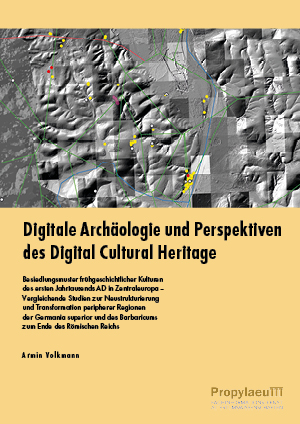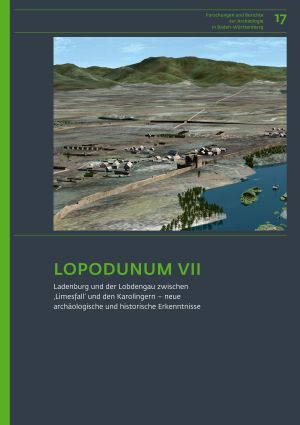Volkmann, Armin
Digitale Archäologie und Perspektiven des Digital Cultural Heritage: Besiedlungsmuster frühgeschichtlicher Kulturen des ersten Jahrtausends AD in Zentraleuropa. Vergleichende Studien zur Neustrukturierung und Transformation peripherer Regionen der Germania superior und des Barbaricums zum Ende des Römischen Reichs
The study bridges the still existing gap between the archaeological sciences and applied computer science in order to examine the comprehensive restructuring processes systematically within and outside the Roman Limes during the Migration Period of the 4.−8. cent. AD based on exemplary questions and focused to the end of the Roman Empire. The study applied selected methods of the archaeoinformatics or computational archaeology to help clarify the cultural-historical issues involved. Specialist data from cooperating institutions provided the basis for this study. The backbone for the study is the project's Archaeological Information System (AIS) with a large corpus of specific data supplemented with relevant retro-digitised catalogues and via web interfaces integrated databases. In order to ensure the representativeness of the theses obtained the project use comparative data from several Central European micro-regions. Within this, the aim was on settlement processes of the Migration Period between the Roman Empire and the Early Middle Ages with a short view to the previous La Tène period. Complex settlement patterns and concepts have been analysed using comprehensible statistical methods, which invite for reproduction in the context of further studies.
LOPODVNVM VII: Ladenburg und der Lobdengau zwischen ‚Limesfall‘ und den Karolingern
The town of Ladenburg looks back on a rich historical heritage: In the Roman era, Lopodunum was the capital of an extensive municipality, the civitas Ulpia Sueborum Nicrensium, and from the Carolingian period onward, Lobedtenburc is documented as the center of the Lobdengau. For the period in between, written sources are largely missing; all the more important are archaeological features and finds. The most important of these are presented in the volume at hand and embedded in the historical context. For instance, a group of Postumus coins from Ladenburg are presented, new interpretations of the late Roman burgus and the medieval ‘bishop's court’ are discussed, and recent findings on a Carolingian cemetery in the city area are presented. The surroundings of Ladenburg are represented by overviews on the richly equipped early medieval cemeteries of the region and on recent settlement excavations. Critical re-evaluations of written sources as well as historical-archaeological syntheses on the various possible scenarios of the 'Fall of the Limes' and on comparative regions such as the Palatinate in Late Antiquity complete the volume.








